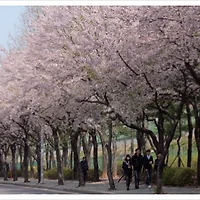Have you heard of “Hwitagu”,
which is racket held with both hands, an indigenous sport of Korea?
The founder of Hwitagu Kim Hyeong-Seok
Writer Lee Hyeon-Ju
Photographer Jeong Dong-Myeon
The name Hwitagu consists of Hwi (揮) meaning swinging, Ta (打) meaning hitting, and Gu (球) meaning balls. As the name implies, Hwitagu is a sport where one passes a ball by holding a racket and swinging and hitting the ball. This sport is best understood as a combination of badminton, table tennis, and tennis. it’s a game is played in a 3m x 8m field, and can be won by sending the ball to your intended location only by taking an accurate posture. Therefore, it has an excellent effect on correcting posture. This is a sport based on technique, not power. Therefore, it is also attractive in terms that men and women of all ages can enjoy it. While tennis, table-tennis, and badminton are single-handed sports, using only one arm, Hwitagu is a complete sport that uses both hands. This first encounter with the sport makes us curious about its origin. Kim Hyeong-Seok, the director of the Yeonsu-gu Sport for All Association, is its founder.
“Are you a black-belt player?”
Meeting Director Kim, who has short sporty hair and a solid body, makes me ask this question. Director Kim, who overwhelms us even with his shining eyes, was originally a national kendo player. In order to overcome his short height, he first founded “Hwichota Geomdo” that uses two swords. The two-sword exercise, using both hands, balanced his body. Director Kim, who realized the benefits of exercises that utilize both hands, tried picking up rackets instead of the swords. This is how Hwitagu was developed. He has put together textbooks by taking photos of every motion, ranging from holding the racket to swinging it. He has written six books about Hwitagu alone.
These books are filled with difficult Chinese characters, including “Jeong (正) Sang (上) Hwi (揮), Jwa (左), Sang(上) Hwi (揮), Woo (右) Jung (中) Hwi (揮), Woo (右) Ha (下) Hwi (揮)....”
“When I was in high school I was not interested in studying by doing exercise, but I was strangely attracted to Chinese and Japanese.” He was immersed in studying Chinese characters, so he learned 3,000 characters, sleeping only four hours a day. He explains that his books have been written using Chinese characters as they enable writing about how to use the racket in a simple and implicative manner.
If an individual receives Hwitagu training from the first to third grades, he/she can obtain a license to be a Hwitagu instructor. Using this, the individual can either run his/her own studio or be sent as an instructor in a community center.
His dream is to develop Hwitagu into an international sport. “I consider hosting an international competition around 2017. I want to make our indigenous martial arts known along with our country’s history. It would be good if all Koreans become healthy through Hwitagu, the world’s first racket-based exercise using both hands.”
Hwitagu, developed in 2009, has currently 1,500 studios nationwide. It has spread beyond Korea to the UK and US.










